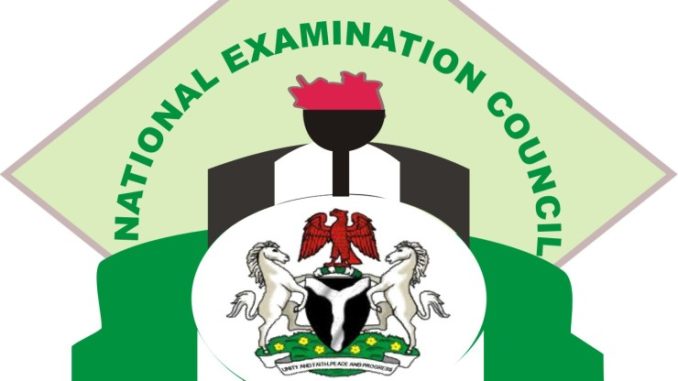
BOOK KEEPING OBJ
01-10: ADCDBECDDC
11-10: DDDAEADDBE
21-30: DDEDBBCAAC
31-40: ACDCCBBCCC
41-50: EEDEBABBBB
51-60: CCADCACDDC
Completed
(1a)
(i) Business owners
(ii) Investors
(iii) Lenders
(iv) Government authorities
(v) Employees
(vi) Auditors
(vii) Creditors
(viii) Tax authorities
(ix) Financial analysts
(x) Suppliers
(1b)
(PICK ANY THREE)
(i) Bookkeeping is more focused on collecting, storing, and organizing financial transactions while accounting is analyzing, interpreting, and communicating financial information.
(ii) Bookkeeping involves recording financial transactions in a journal, while accounting involves summarizing, analyzing, and reporting this financial information in reports.
(iii) Bookkeepers work with smaller details while accountants work with the bigger picture.
(iv) Bookkeepers use manual or computerized systems to record information, whereas accountants use accounting principles in order to interpret the information.
(v) Bookkeepers are mainly concerned with recording data while accountants interpret and analyze the data in order to make informed decisions.
(1c)
(PICK ANY THREE)
(i) Normal Wear and Tear
(ii) Obsolescence
(iii) Physical Deterioration
(iv) Human Error
(v) Market Conditions
(2a)
-Similarities-
(PICK ANY FOUR)
(i) Both are used to record cash transactions.
(ii) Both provide a summary of cash inflows and outflows.
(iii) Both are maintained on a daily basis.
(iv) Both use debit and credit entries to indicate amounts being received or paid out.
(v) Both are reconciled with the bank statement monthly.
(vi) Both track cash expenditures.
-Difference-
Three Column Cashbooks record separate columns for transactions related to sales, purchases and other expenses, while Two Column Cashbooks record separate columns for transactions related to income and expenditure.
(2b)
(PICK ANY EIGHT)
(i) Donations
(ii) Grants
(iii) Fundraising Events
(iv) Sponsorships
(v) Corporate Gifts
(vi) Grants from Government Agencies
(vii) Endowments
(viii) Investment Returns
(ix) Membership Fees
(x) Merchandise Sales
(2c)
(PICK ANY FIVE)
(i) Purchases Book
(ii) Sales Book
(iii) Returns Inwards Book
(iv) Returns Outwards Book
(v) Bills Receivable Book
(vi) Bills Payable Book
(vii) Petty Cash Book
(viii) Journal Proper.
(3i)
Bad debts: Bad debts refer to the unpaid debts that a business is unable to recover from its customers. These debts usually arise when a customer is unable to pay their outstanding balance due to bankruptcy, financial difficulties, or any other reason. In such cases, the business will typically write off the debt as a bad debt.
(3ii)
Gross Profit: Gross profit is the profit earned by a business after deducting the cost of goods sold from its total revenue. It is an important measure of a company’s efficiency and profitability as it measures the amount of money that the company earns from sales before paying for expenses and taxes.
(3iii)
Discount Allowed: Discount allowed is a reduction in the list price of a product or service given to a customer when they purchase it. Discounts can be given in the form of cash or by offering reduced prices on products or services.
(3iv)
Discount Received: Discount received is the amount of money that a business saves when it buys a product or service at a discounted rate. This type of discount can be provided by the seller or other third parties, such as distributors or wholesalers.
(3v)
Credit Note: A credit note is a document issued by a seller to a buyer when returning goods or services. The credit note is typically issued in exchange for a refundable payment and is used to acknowledge that a portion of the original purchase has been returned or cancelled.
(4a)
(i) Opening stock: The value of inventory held at the beginning of the accounting period.
(ii) Purchases: The cost of acquiring goods for resale during the accounting period.
(iii) Direct expenses: These include wages, transportation costs, and other expenses associated with acquiring the goods for sale.
(iv) Discount received: Any discounts given by suppliers.
(v) Gross profit/loss: The difference between sales and cost of goods sold.
(vi) Closing stock: The value of inventory held at the end of the accounting period.
(vii) Sales: The total value of goods sold during the accounting period.
(viii) Returns inwards: Goods returned to the seller by customers.
(ix) Returns outwards: Goods returned to suppliers by the business.
(x) Net profit/Loss: This is the difference between the total income and the total expenses of the business.
(4b)
(PICK ANY FIVE)
(i) Straight-line Method
(ii) Units of Production Method
(iii) Sum-of-the-Years’ Digits Method
(iv) Double-Declining Balance Method
(v) Declining Balance Method
(vi) Activity Method
(4c)
(PICK ANY FIVE)
(i) Error of omission
(ii) Compensating error
(iii) Error of principle
(iv) Error of original entry
(v) Error of carrying forward a balance
(vi) Error of commission
(vii) Error of reversal
(viii) Error in the extension

Leave a Reply